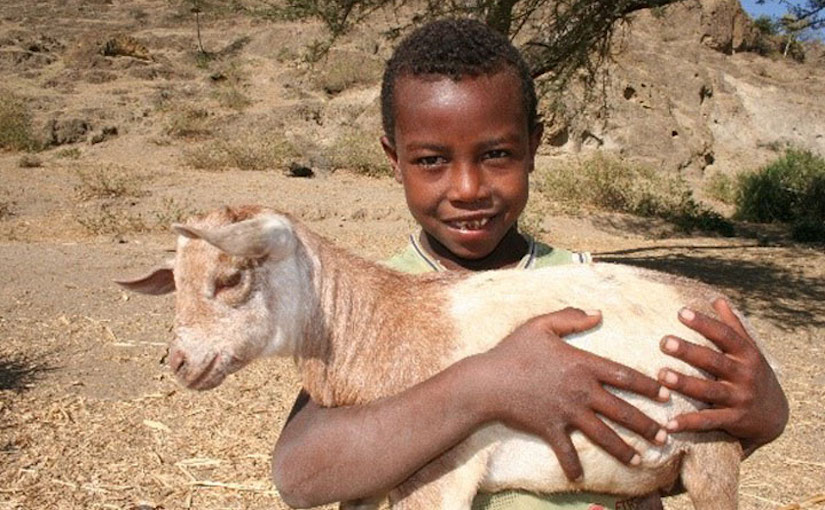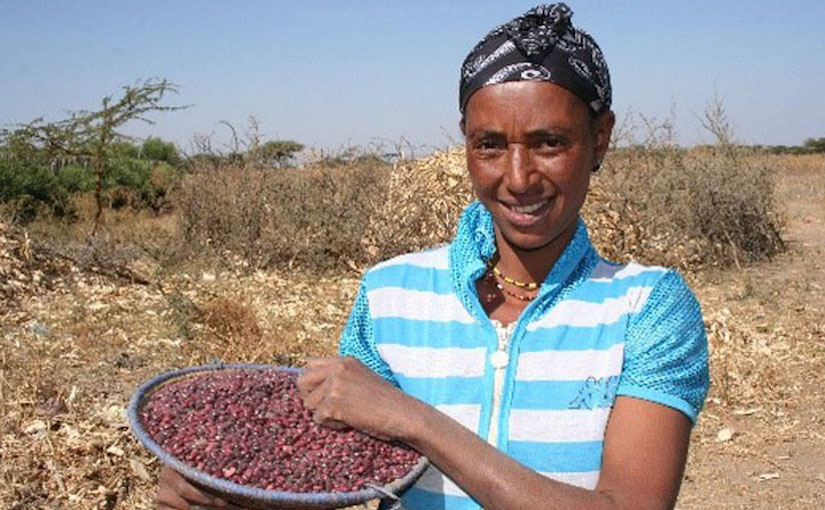Reducing the Risk of Disaster in Ethiopia: Five Tactics to Mitigate the Challenges Associated With a Drought
- by Semereta Sewasew, communications manager, Ethiopia
- / Member Spotlight
Extreme weather has been threatening communities in Ethiopia as this second drought in as many years dries up farmland, forcing people to abandon their homes in search of food and income.
 Disadvantaged farmers in Ethiopia were shown how to care for goats. The animals not only provide milk, but they can survive on shrubs and trees in harsh conditions, such as a drought.
Disadvantaged farmers in Ethiopia were shown how to care for goats. The animals not only provide milk, but they can survive on shrubs and trees in harsh conditions, such as a drought.
“Despite many successes, there are still far too many lives being lost in predictable events because of failures to deploy early warning systems, learn lessons from past events and grasp the growing threat of climate change and its impact on extreme weather,” explained Robert Glasser, the UN secretary-general’s Ethiopia special representative for disaster risk reduction.
ChildFund Alliance member Christian Children’s Fund of Canada (CCFC) is doing its part to reduce disaster risk in communities it supports in Ethiopia. It has taken five steps to foster resiliency and provide relief, following the drought that began in 2015.
 Farmers in Ethiopia have learned how to use drought-resistant seeds to maximize their productivity on a small pocket of land.
Farmers in Ethiopia have learned how to use drought-resistant seeds to maximize their productivity on a small pocket of land.
1. Communities have been trained in emergency planning
- In 2015, representatives from 10 communities in Langano and Soddo participated in emergency-preparedness training. For example, attendees learned an increase in wind and/or temperature and late rainfall can provide foresight about extreme weather ahead.
2. Communities learned how to improve their resilience
- In Langano, 256 disadvantaged farmers were given goats. The hardy animals reduce a farmer’s vulnerability to the impact of disaster, especially since the majority of the recipients were trained in goat management, including how to improve dairy production, nutrition and sanitation.
3. People learned to build income through environmental awareness
- more than 600 people in Arsi Negelle district learned to reduce their vulnerability to disaster by saving resources such as seeds for planting and sharing seeds among the community.
- Two sections of land in Arsi Negelle were fenced off to rehabilitate vegetation by protecting the soil, preventing animal grazing and reducing human settlement and tree cutting.
4. Farmers have benefited from drought-resistant seeds
- In Soddo, 500 disadvantaged farmers received drought-resistant taro-root seeds. In Soddo, 155 farmers were trained in post-harvest management and improved agricultural technologies so they can maximize productivity within a small plot of land. In nine kebeles (neighbourhoods) of Arsi Negele, 864 farmers were given short-season and drought-resistant seeds, such as wheat and haricot beans.
5. Schools and health posts are preserving water
- In the Langano area, seven schools and one health post were outfitted with roof-harvest structures to collect rainwater for handwashing, as well as to fill and clean toilets.
CCFC, and our partners in the ChildFund Alliance, are continuing to monitor the drought in Ethiopia and help where needed.
ChildFund is also responding to the broader famine in the Horn of Africa.
===
About Christian Children's Fund of Canada
Christian Children’s Fund of Canada (CCFC) is a child-focused international development organization and a member of ChildFund Alliance. For more than 55 years, CCFC has been helping children and families of all faiths move from poverty to self-reliance. CCFC supports children and communities in 12 countries across Africa, Asia and the Americas, and works to improve the lives of more than 700,000 people around the world.











